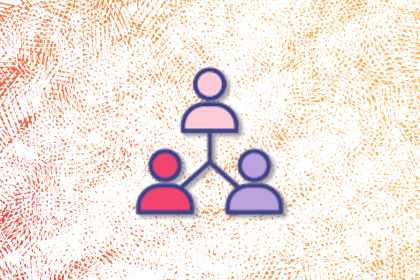
Groundbreaking products can change an entire industry. But to create this kind of impact, you need to do more than just improve on products that already exist in the marketplace — you need an innovative idea that creates a new market.
Zero-to-one product development provides an opportunity to create a unique solution to previously unaddressed. In this blog, I talk about what it takes to build a zero-to-one product.
Zero-to-one products refer to building an entirely new product. The “zero” in this term represents no product, and “one” means the first version of the product.
Zero-to-one products are not just about solving a problem; they are about challenging conventional thinking. It’s an exhilarating phase of product development that demands risk-taking, creativity, and a strong vision of the future.
Peter Thiel and Blake Masters introduced the concept of zero-to-one products in their book _Zero to One. _The book describes the strategies to turn an innovative idea into a product.
A few key characteristics of a zero-to-one product include:
Zero-to-one is about building a never-before-seen product in a new market. Meanwhile, one-to-n involves making new iterations of or scaling an existing product.
One-to-n products often optimize user experience, introduce new features, or expand into new markets, but they don’t redefine the landscape like zero-to-one products do.
When looking at zero-to-one products, it’s hard to ignore the success story of Airbnb. Renting out rooms and homes was an innovative idea, creating a new hotel and hospitality industry market.
Here’s a look at a rough timeline of events that turned Airbnb into what we know it as today:
Before beginning the product development process, you need to understand the “zero” phase. Validate that your unique product idea has potential. Even if there’s little existing data, conducting market analysis will help you determine whether your product idea is novel, valuable, and likely to succeed.
Airbnb began by renting out air mattresses in their apartment and serving guests breakfast. When three people booked them, the founders felt they had a valid and unique idea that could disrupt the hotel industry.
“The key is drawing parallels between your product and a similar product,” explains Pratik Chawla, Head of Product at Tempo. “Once you’ve done that, try to validate the user segment. Find out what the segment size is, what their pain potential is, and what their opportunities for growth are, then use surveys, interviews, and other types of user research to talk to the users of that segment.”
Chawla also points out that validating pain points is crucial to confirming your product idea. Present a scenario with your product during your research and ask users if they would consider using it.
Now that you’ve established the foundation for the “zero” phase, you can move on to developing the product. There are a few strategies to consider when developing truly innovative ideas:
Creating a strong zero-to-one product means hiring multiple people with a diverse skill set. Beyond their expertise, you need to consider whether they share the same vision and values for the company. These are essential attributes of creating a collaborative team.
PMs must also consider methods for creating a culture of open communication and creative thinking. It helps empower team members to suggest original ideas without fear.
“…it’s important to create a culture of experimentation where people are rewarded not just for their product shipments, but for all of their ‘failed’ ideas as well,” said Chawla. “In the end, final products don’t ship anywhere close to how we envisioned them. This is why it’s important to invite people to create prototypes, whether they end up working out or not.”
While your product idea may be big, the MVP should be small. A simple MVP shortens the timeline to go to market, so you can gather user feedback and iterate quicker.
Testing the MVP in the market is crucial to validate your hypothesis. You don’t want to spend too much time on features that don’t matter to the user. You can only gather this data by testing it with a live market.
The goal of the MVP isn’t to drive results — the aim is to validate assumptions or learn what the customer really needs. A simple MVP makes it easier to iterate quickly based on these lessons.
Not everyone will be the perfect fit as your ideal first customers. Some people are more willing to experiment with new technologies — the early adopters. Targeting them at the beginning of your zero-to-one development can provide valuable feedback and help you refine your product.
Early adopters have the capacity to test out your product to see if it solves their problem. They may also be more tolerant of working out issues with you and contributing feedback. More established organizations don’t usually fall into this category. That’s why it’s important to hone in on early adopters.
The MVP should cater to early adopters’ core needs. It’s also important to ensure a process keeps them engaged and motivated. The customer relationship should feel more like a partnership.
Continuously receiving and adopting customer feedback is key to developing a zero-to-one product. Building a product based solely on assumptions risks creating something no one will use. Managers should put the customer first during the zero-to-one development phase.
Customer feedback is crucial to confirming you are building the right features that are attractive to them and ensuring their continued engagement with the product. You’ll want to create a process where the customer is always providing commentary on the product development. The goal is to refine your product to match the customers’ needs.
Once you’ve achieved product-market fit, you can prepare your product to reach a broader audience.
While it can be incredibly rewarding, there are significant challenges to creating zero-to-one products. Here are some hurdles you may face:
Overcoming these challenges isn’t impossible — just focus on adaptability, prioritizing customer feedback, and continuously testing the product with a real live market.
Building a new product that changes an industry is exciting and difficult work. There are a lot of challenges involved in developing a zero-to-one product. You’ll have to embrace the possibility of failure, but you can’t reach your big goals without taking some risks.
The real test begins by creating a simple MVP or even a prototype. Get your product to market as fast as possible, so you can receive real customer feedback and make adjustments.
Zero-to-one products take effort and grit, but it’s the only way to know if you have a groundbreaking idea!

LogRocket identifies friction points in the user experience so you can make informed decisions about product and design changes that must happen to hit your goals.
With LogRocket, you can understand the scope of the issues affecting your product and prioritize the changes that need to be made. LogRocket simplifies workflows by allowing Engineering, Product, UX, and Design teams to work from the same data as you, eliminating any confusion about what needs to be done.
Get your teams on the same page — try LogRocket today.

Avoid weak product-market fit and wasted resources. Learn how to narrow broad customer segments into a focused beachhead strategy.

Learn how to build a cohesive AI strategy that drives measurable impact, aligns with business goals, and improves product workflows.

Learn why designing for niche user types like first-time, older, or low-connectivity users can boost adoption, loyalty, and market reach.

How did 200+ product managers answer the question: Is PM an art or a science? Find out in this roundup article.